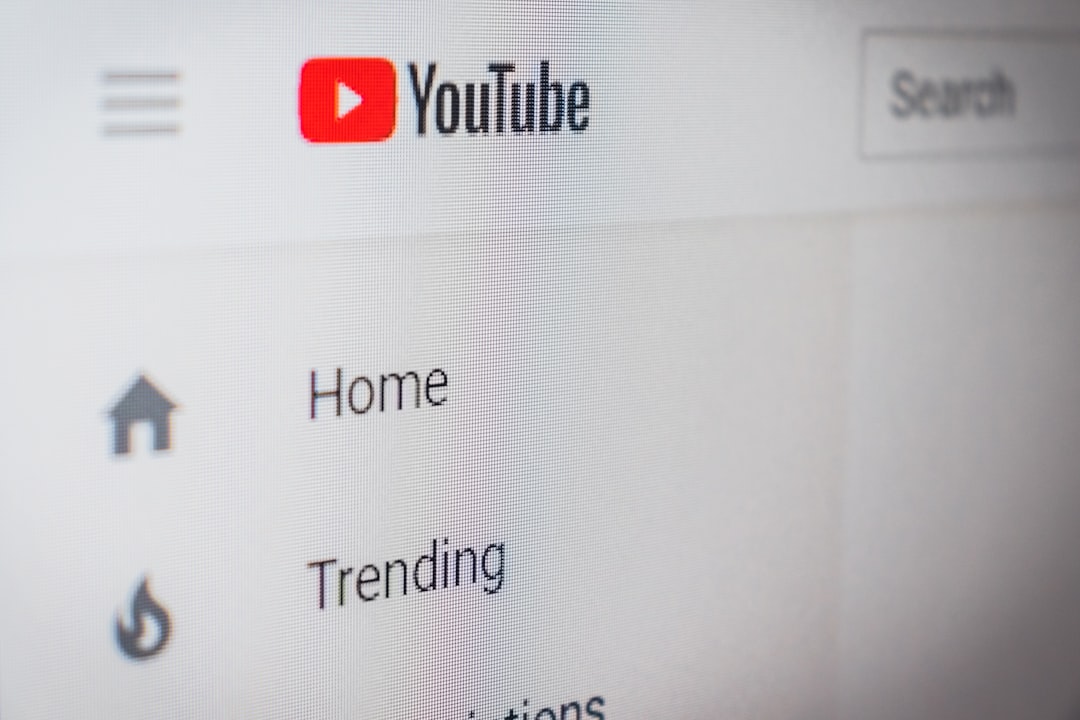What SEO in YouTube Means for Your Channel’s Growth
SEO in YouTube means optimizing your videos and channel to rank higher in YouTube’s search results and recommendations. It’s the process of using keywords, metadata, and engagement signals to tell YouTube’s algorithm that your videos deserve to be seen, helping more people find your content organically.
Quick Answer:
- SEO in YouTube means making your videos easier for YouTube’s algorithm to understand and recommend.
- Core elements include: keyword-optimized titles, descriptions, tags, thumbnails, and watch time.
- Primary goal: Increase organic views, subscribers, and engagement without paid ads.
- Key metric: Audience retention (40%+ is excellent; 35% is average).
- Why it matters: YouTube is the second largest search engine after Google.
Think of YouTube SEO like setting up a storefront with clear signs (titles) and good window displays (thumbnails) so customers can find what they need. As a local business owner, you know being found online is everything. YouTube works the same way, using search engine optimization (SEO) principles to understand and promote your videos based on watch time, engagement, and click-through rates.
I’m Bernadette King, founder of King Digital Marketing Agency. I’ve spent years helping small businesses get real results from digital marketing, and YouTube SEO is a powerful tool for attracting customers and building brand authority.
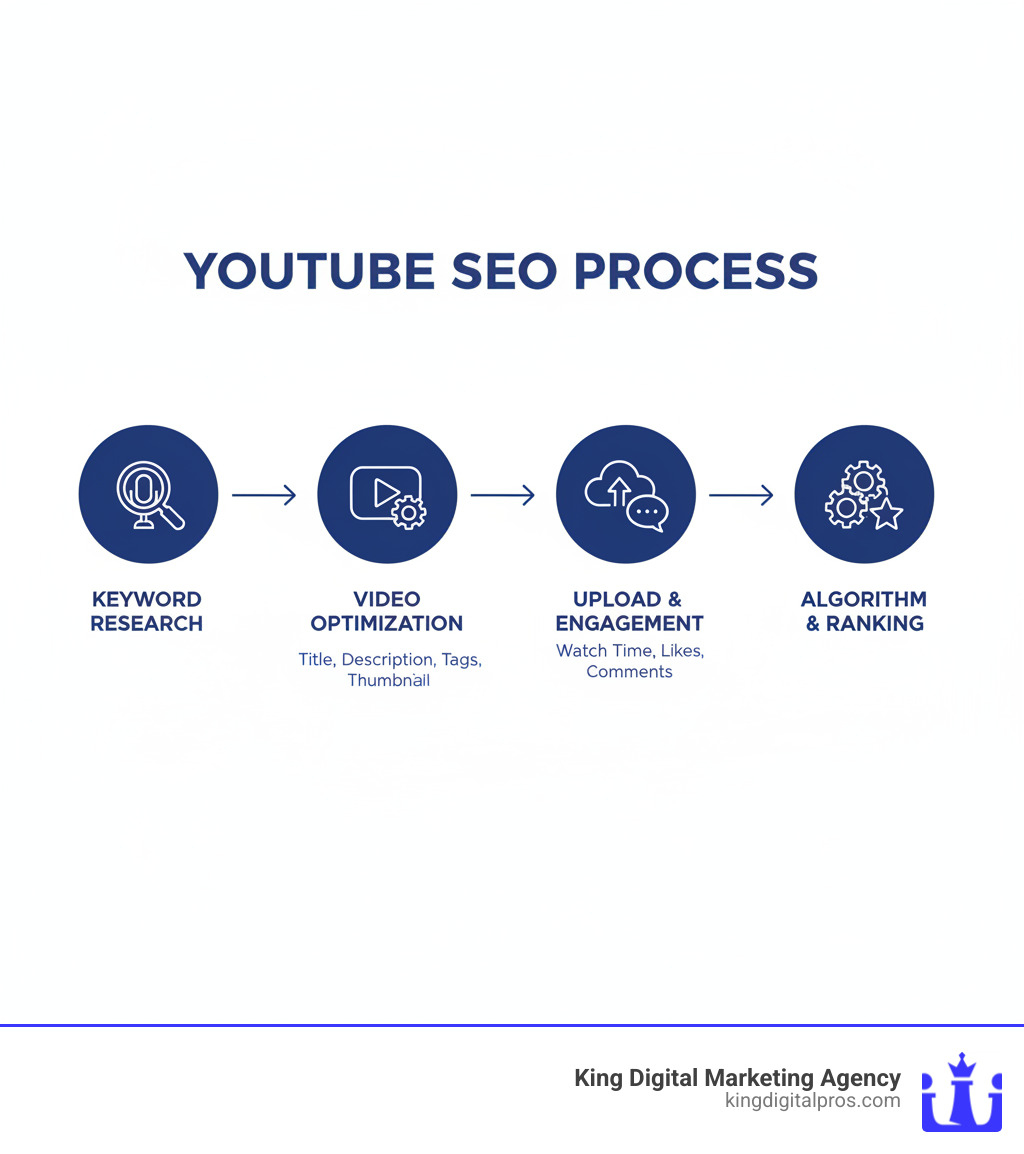
At its heart, SEO in YouTube means making your content findable by the right audience. The YouTube algorithm acts as a matchmaker, connecting viewers with videos they’re likely to enjoy. It analyzes keywords, watch time, engagement (likes, comments, shares), and video metadata to determine rankings. A well-optimized video acts as a signpost, guiding YouTube’s recommendation systems to your content and helping you improve search ranking.
Understanding the Core Ranking Signals
To grasp what SEO in YouTube means, focus on the signals its algorithm prioritizes. First is user engagement. Comments, likes, and shares are critical ranking factors, signaling that your video is valuable.
- Likes and Dislikes: All interactions, even dislikes, count as engagement.
- Comments: A lively comment section indicates a strong community.
- Shares: When viewers share your video, it signals high value and expands your reach.
YouTube’s algorithm also uses AI to “watch” your video, using speech recognition and image mining to understand its topic. While this is powerful, providing clear metadata reinforces this understanding. The algorithm is also highly personalized, considering a viewer’s watch history. Your goal is to create high-quality, valuable content that consistently satisfies user intent.
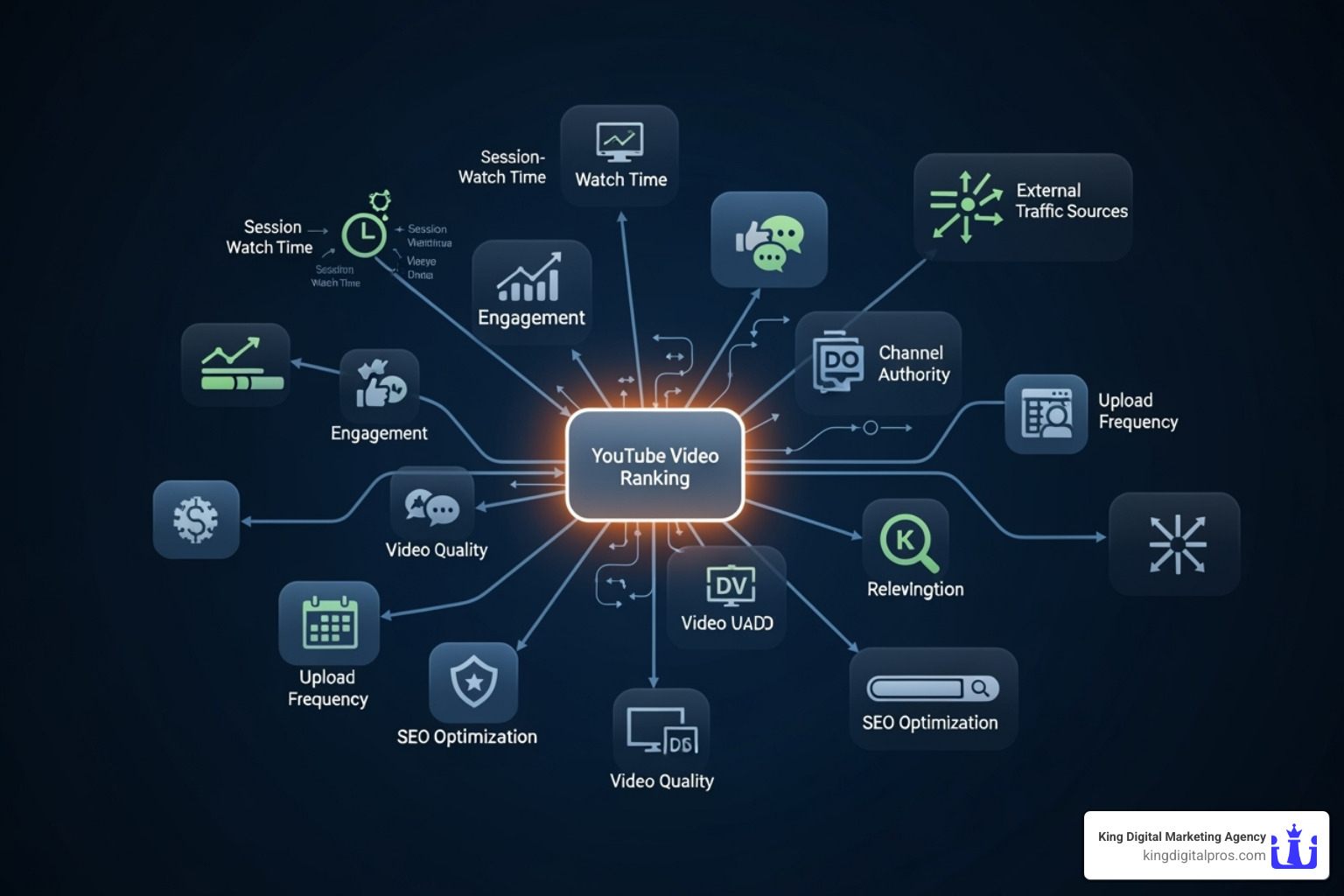
The Importance of Watch Time and Audience Retention
If engagement is the heart of YouTube SEO, then watch time and audience retention are its lifeblood. YouTube’s goal is to keep users on its platform, and it heavily favors videos that help achieve this.
- Watch time is the total time viewers spend watching your videos. Longer watch times signal valuable content.
- Audience retention rate measures how much of your video people watch. A rate above 40% is excellent, while 35% is average. A quick drop-off signals that your video isn’t delivering on its promise.
To maximize retention, hook your audience in the first 15 seconds, use pattern interrupts (like graphics or changing shots) to maintain interest, and add captions, which can increase watch time by up to 12%. By creating captivating content, you tell YouTube your videos are worth recommending.
Mastering On-Page Video Optimization
SEO in YouTube means being strategic with the elements you control during an upload. This video metadata—your titles, descriptions, and thumbnails—tells YouTube’s algorithm what your content is about. This on-page SEO is the foundation for making your videos findable.
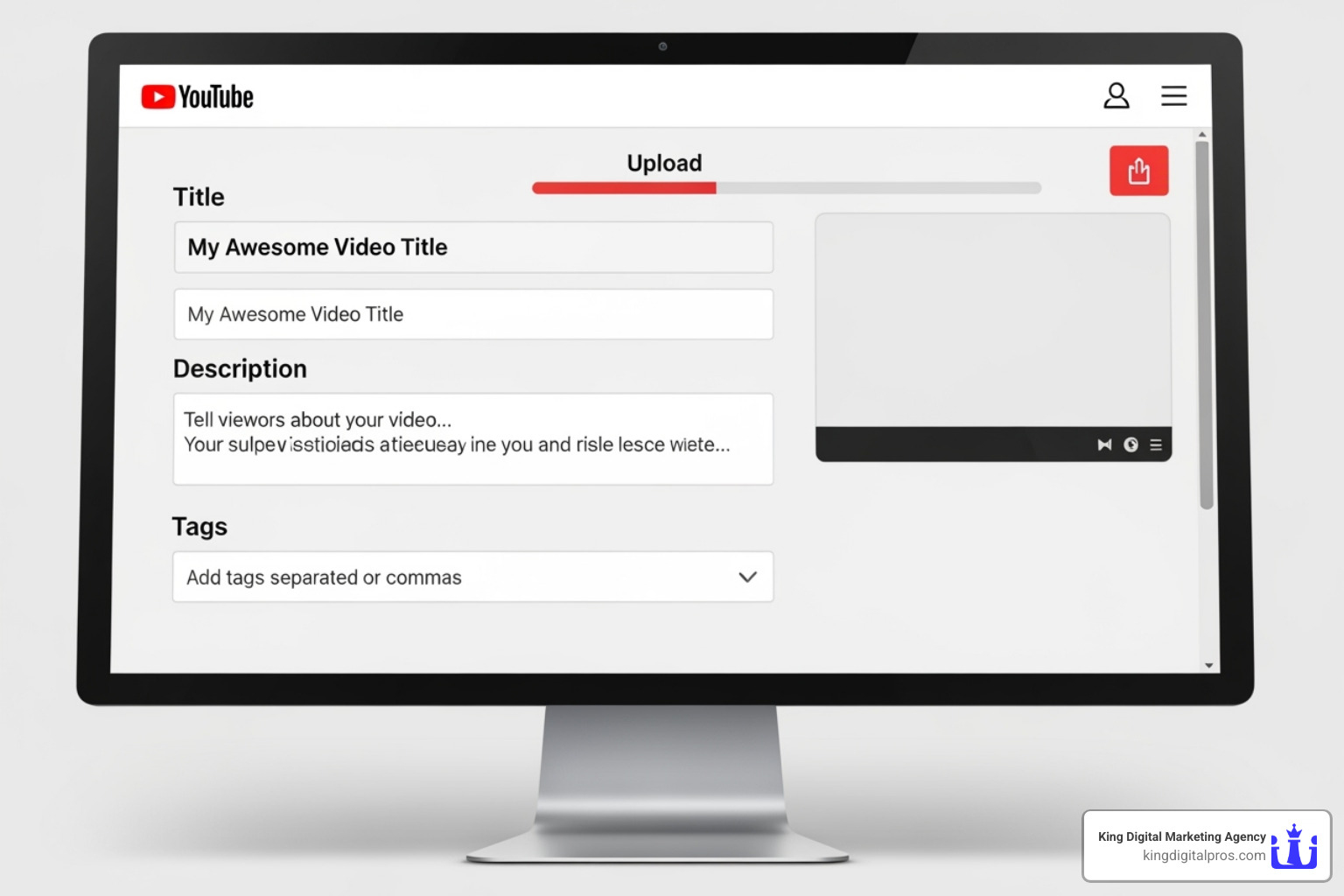
Conducting Effective YouTube Keyword Research
Before you write anything, you must understand what your audience is searching for. Keyword research is about matching your content to user search intent.
Start by typing your topic into YouTube’s search bar. The YouTube search suggestions that appear are real phrases people are using. Pay attention to long-tail keywords (longer, more specific phrases like “how to fix a dripping kitchen faucet at night”). They have lower search volume but show clearer intent and have less competition, making them a secret weapon for new channels.
Also, optimize for question-based keywords like “How do I improve my local SEO?” as voice search becomes more common. Use tools like Google Trends for YouTube to compare search terms and spot trends. Finally, conduct a simple competitor analysis by searching your keywords and examining the top-ranking videos to see what titles and descriptions the algorithm is already rewarding.
Pro tip: Rename your video file with your primary keyword before uploading (e.g., “youtube-seo-tips-for-beginners.mp4”).
Best Practices for Video Titles, Descriptions, and Tags
Once you have your keywords, weave them naturally into your video’s metadata.
-
Video Title: Your title is a major ranking factor. Include your primary keyword near the beginning. Aim for 50-60 characters so it doesn’t get cut off in search results. Compelling titles often use numbers (“5 Ways to…”), create curiosity (“Why Your Videos Aren’t Getting Views”), or promise a clear benefit. Never mislead viewers.
-
Video Description: Use the generous 5,000 character limit. Write at least 250 words describing what viewers will learn. Include your primary keyword within the first 25 words. Add timestamps for different sections, relevant links, and a clear call-to-action. Mention your keyword and related terms 2-4 times naturally.
-
Hashtags and Tags: Add 2-3 relevant hashtags at the end of your description. For video tags, make your target keyword the first tag, then add 5-8 broad and specific related terms. Don’t use irrelevant tags or competitor names, as YouTube may penalize this.
Crafting Click-Worthy Thumbnails
Your thumbnail doesn’t directly impact ranking, but it massively affects your click-through rate (CTR), which does. A great thumbnail is your video’s book cover—it needs to stop the scroll.
Always use custom thumbnails, which requires a verified account. Here are the best practices:
- Resolution: Design thumbnails at 1280×720 pixels (16:9 aspect ratio) for sharpness on all devices.
- Design: Use high-contrast design with bold colors and clear, readable fonts.
- Text: Keep text overlay brief—just 3-5 words that reinforce the title’s benefit.
- Branding: Use consistent branding (colors, fonts, logo) so viewers instantly recognize your content.
- Accuracy: Your thumbnail must accurately represent the video. An eye-catching thumbnail is crucial, but misleading viewers will destroy your retention rate and rankings. A good CTR is typically between 2% and 10%.
Expanding Your Reach with Channel-Level SEO
SEO in YouTube means thinking beyond individual videos. Optimizing your entire channel builds channel authority and improves the user experience. When YouTube sees you’re a reliable source of quality content with a clear focus, it rewards you. A well-organized channel signals that you’re a serious creator.
For local businesses, like those we help as a digital marketing agency for small businesses, a YouTube channel is a powerful way to appear when customers in areas like Albuquerque NM or Santa Fe NM search for solutions. It positions you as the local expert.
Optimizing Your YouTube Channel Page
Your channel page is where potential subscribers decide if you’re worth following. Make it count.
- Channel Name: Keep it clear and descriptive. Your business name is ideal for brand recognition.
- Channel Description: In the “About” section, clearly explain what your channel offers in the first 100-150 characters, as this appears in search previews. Weave in your main keywords naturally.
- Channel Keywords: In your settings, add keywords that describe your channel’s overall theme.
- Channel Banner: Use a professional, on-brand banner with your logo and a simple tagline.
- Channel Trailer: Create a short video for non-subscribers that serves as an elevator pitch, explaining why they should subscribe.
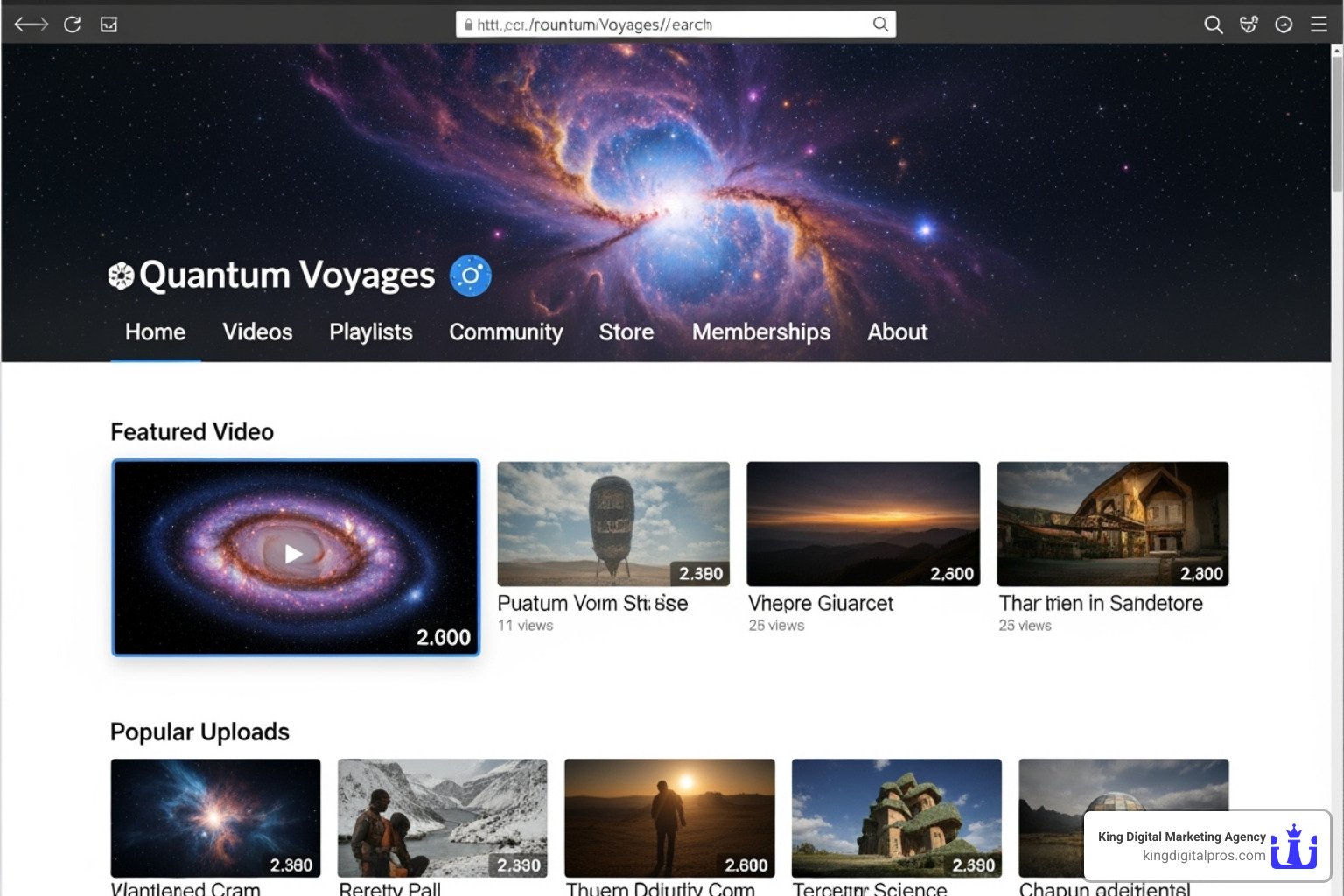
A polished channel page creates a professional impression that encourages visitors to explore your content.
The Power of Playlists, Cards, and End Screens
Guide viewers deeper into your content to increase session watch time, a metric YouTube loves.
- Playlists: Group videos by theme to encourage binge-watching. Give your playlists keyword-optimized titles and descriptions, as they can rank in search results themselves.
- YouTube Cards: Use these small pop-up notifications to promote a relevant video, a playlist, or link to your website. Use them strategically to add value. Learn more from YouTube’s official guide: YouTube Help: Add cards to videos.
- End Screens: In the final 5-20 seconds of your video, use end screens to encourage subscriptions, suggest the next video, or promote a playlist. It’s your last chance to guide the viewer.
Why ‘seo in youtube means’ Focuses on Engagement
All the optimization in the world won’t matter without real audience connection. Engagement signals—comments, likes, shares—are a top factor in YouTube’s ranking decisions.
When your video gets people talking and sharing, you’re helping YouTube keep users on the platform, and they’ll reward you with more visibility. Encouraging comments is as simple as asking direct questions in your video. Crucially, you must reply to comments to show you value your audience and build a loyal community.
Use a pinned comment to spark discussion or share extra resources. Use community posts to stay connected with your audience between uploads. Finally, don’t be afraid to remind viewers to like and share your video. These actions are a direct ranking signal that tells YouTube your content resonates. This creates a virtuous cycle: more engagement leads to better rankings, more views, and even more engagement.
Measuring and Refining Your Strategy
YouTube SEO is never “finished.” Understanding what SEO in YouTube means is recognizing it’s an ongoing process of listening and adapting. The most successful channels use data-driven decisions for continuous improvement. For more insights on building effective strategies, check out our blog.
Using YouTube Analytics to Understand What ‘seo in youtube means’
YouTube Analytics is your direct line to understanding audience behavior. It’s a free, powerful tool that tells you what’s working and what isn’t.
Key reports to monitor include:
- Traffic Sources: Shows how people find your videos (e.g., YouTube search, suggested videos). This tells you where to focus your efforts.
- Audience Retention: A second-by-second graph showing when viewers leave. Use these “viewer drop-off points” to identify boring sections and improve future videos.
- Demographics: Reveals your audience’s age, gender, and location. For local businesses in areas like Rio Rancho NM or Corrales NM, this confirms if you’re reaching the right community.
- Click-Through Rate (CTR): Measures how effective your titles and thumbnails are at getting clicks. A low CTR means your packaging needs work.
- Search Terms: Shows the exact keywords people used to find your videos, revealing new content opportunities.
By regularly checking these reports, you can identify your top-performing content and double down on what resonates with your audience.
Common YouTube SEO Mistakes to Avoid
Even with good intentions, it’s easy to fall into common traps. Avoid these mistakes:
- Keyword Stuffing: Don’t cram keywords unnaturally into your titles and descriptions. Write for humans first; the algorithm is smart enough to understand context.
- Misleading Thumbnails: Clickbait might get a click, but it destroys your retention rate when the video doesn’t deliver. This tells YouTube your content disappoints viewers.
- Ignoring Analytics: Driving blind is a bad strategy. Use the free data YouTube provides to make informed decisions.
- Inconsistent Publishing: A regular schedule, whether weekly or monthly, signals to YouTube that your channel is active and reliable.
- Buying Subscribers or Views: Fake engagement is easy for YouTube to spot and can lead to penalties or channel termination. There are no shortcuts to building a real audience.
- Irrelevant Tags: Using unrelated or competitor tags is considered spam and won’t help you rank. Stick to tags that accurately describe your content.
- Ignoring Community Engagement: Not replying to comments is a missed opportunity to build relationships and boost engagement signals.
Conclusion
So, what does SEO in YouTube mean? In short, it’s a strategic process of making your content findable to the right audience. It involves optimizing individual videos, managing your channel as a cohesive brand, and actively engaging with your community.
We’ve covered the essentials: focusing on core ranking signals like watch time and user engagement, mastering on-page elements like titles and click-worthy thumbnails, and leveraging channel-level features like keyword-optimized playlists. We also stressed the importance of making data-driven decisions with YouTube Analytics and avoiding common mistakes like keyword stuffing or using misleading thumbnails.
For small businesses in New Mexico—from Los Alamos NM to Grants NM—YouTube SEO is a powerful opportunity to connect with local customers who are actively searching for your expertise.
Here’s the truth: high-quality content is king, but optimization is what puts that crown on its head. Your videos deserve to be seen, and understanding what SEO in YouTube means is your competitive advantage.
At King Digital Marketing Agency, we help businesses get found online. If you’re ready to turn your YouTube channel into a customer magnet but need expert help, explore our YouTube SEO Services. We’ll handle the optimization so you can focus on creating great content.
YouTube SEO is a journey of continuous improvement. With the foundation from this guide, you’re equipped to adapt, grow, and succeed.

